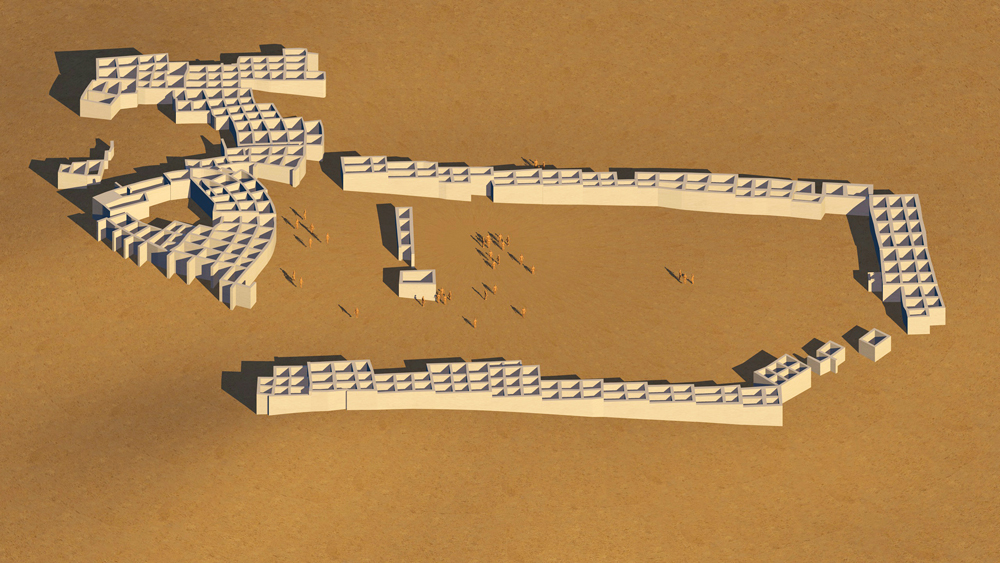
Chevelon Pueblo ruins

Chevelon is an ancient pueblo of the ancestral Hopi people, that has returned to the earth with time. Today only the observant can see the former existence of a great village. This photograph is by Andrea Torvinen.
Chevelon is Ancestral Pueblo, located in northeastern Arizona on the south side of Interstate 40 between Winslow and Joseph City,, Arizona. The site is on the Little Colorado River at the juncture with the Chevron Creek. Chevelon Pueblo. is the third largest villages of the seven Hopi ancestral villages of the Homol'ovi settlement cluster, which were occupied around 1280 t0 1380 C.E. The village is associated as Hopi ancestral because of the finding of yellow colored pottery, which the Hopi are known to produce in contemporary times, which is fired using locally available coal for fuel. Researchers (notably E. Charles Adams) found that when the population left the village to go to the Hopi mesas to the north, they used intentional fires to ritually close and seal many of the buildings' 500 rooms. A large central plaza wassurrounded with masonry room blocks, trash midden, and ceremonial rooms. 20% of the structures were destroyed by fires. Researchers concluded that these fires were not used to destroy the connections with the village, its community, or landscape, but to establish continuity and material memory to these ancestral habitats.
Elevation is 1512 meters (4960 feet) above sea level.
Location coordinates: 34°56'41.7"N 110°31'02.2"W
34.944921, -110.517279
Materials: Mortarless masonry, logs beam roof support of brush and sappling purlins covered by clay/mud roofing.

Photomontage of Chevelon CG model upon aerial photo of actual site looking east along the Little Colorado River (left) and Chevelon Creek (right).

Photomontage of Chevelon CG model upon aerial photo of actual site, looking northwest along the Little Colorado River. The San Francisco Peaks are seen on the horizon.

Looking northdwest.

Looking northeast.

Looking north.

Looking southeast.

Looking southwest.

Looking northeast.

Looking northeast.

Looking west.

Plan view of Chevelon CG model with scale and orientation indicated.
Data for CG model:
1. Morgan, William N., ANCIENT ARCHITECTURE OF THE SOUTHWEST, University of Texas Press, Austin, Texas, 1994.
2. John T. Hack. 1942. The Changing Physical Environment of the Hopi Indians of Arizona, Pp. 128. Cambridge, Massachusetts: Peabody Museum Press.
3.Adams, E. Charles, 2016. CLOSURE AND DEDICATION PRACTICES IN THE HOMOL'OVI SETTLEMENT CLUSTER, NORTHERN ARIZONA, American Antiquity 81(1), 2016 pp. 42-57, Published by Cambridge University Press.
4.Kolber, Jane, 2000. Variations of Human Figures Through Time and Space at Baird's Chevelon Steps, 1999 IRAC Proceedings, Volume 1, P. Whitehead and L. Loendorf, Eds., American Rock Art Research Association, 2000, pp 67-74.